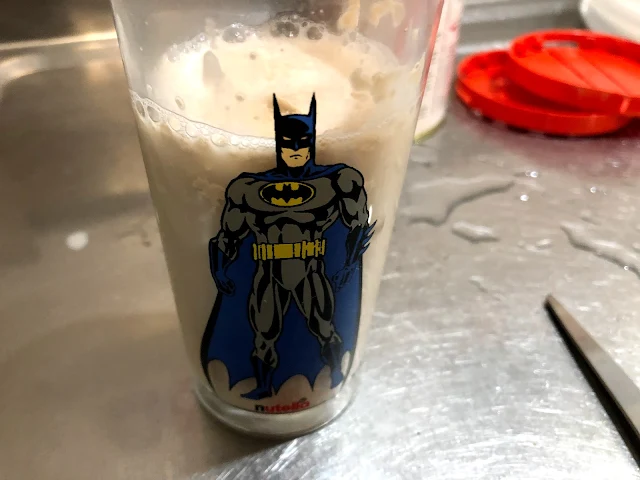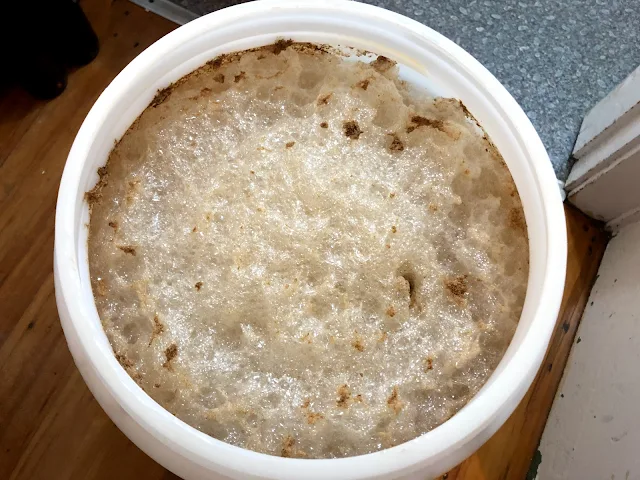
Brewing beer with two malt extract kits
As a beer kit brewer - I've often seen brewing forums chatter about brewing with two cans of malt rather than the traditional one can with added sugars such as dextrose.
I thought it was time to do an experiment and see for myself if using solely two kits for a beer would translate into a good tasting beer.
Given two kits can effectively double the cost of your brew, I grabbed two cans of the cheapest kits I could find at the supermarket which just happened to be Cooper's Stout. Having made reasonable brews with Coopers DIY Kits in the past, I was confident I'd be able to make a drinkable beer!
So how did this experiment go down?
One makes the double kit beer wort in the traditional one kit way except the recipe is effectively doubled.
This means I am adding double the usual amount of malt. This means there's going to be a lot of fermentable molecules in the wort, at a higher ratio than normal (standard 1 KG plus roughly 700 grams more).
Given there is hops oil in each can, I am also doubling the hops count of the batch - this will likely mean that the bitterness of the beer will double (well, let's see how that pans out).
What is also happening is that we are not adding any extra sucrose or dextrose (I usually use a beer enhancer to assist with better taste and good mouth feel). I think that is going to have quite an effect on the beer as I noted above that there will be a vastly higher ratio of malt to water than my usual beer kit brews.
Given this, I suspect the Final Gravity will be higher than the norm and I imagine the ABV may be in the range of 5 - 6 percent though that may be pushing it. Even if it's not that high, I'll get a nice sweet brew.
I am also adding double the yeast as having two kits means I've got two sachets. I think I could have got away with just using one packet but figured let's roll the dice and see what happens. It's possible the extra 700 grams of malt could give the yeast some trouble so some extra will probably help.
I added both packets to a glass of warm water so that it was 'activated' before it when into the wort. I'm not hugely convinced this actually makes a massive difference but I've read that it helps where there's a lot of sugars (malt) in the wort.
 |
| The Dark Knight watches over the yeast |
Here's my trick for getting all the malt out of a can without making too much mess:

So how did this experiment work out?
On return from work that evening (so roughly 36 hours) I observed that fermentation had been going really well. This is probably due to having used two yeast sachets as I have never seen this much bubble activity before:

Those dark brown spots you can see are actually yeast clumps that got caught in the foam after fermentation went into hyperdrive (attack of the Krausen!). I grabbed a clean spoon and gently stirred them back into the wort. I then closed the lid back up nice and tight and carried the drum up to the shed where I wrapped it up in a pile of old towels.
It's just settling into spring here so it will not be too cold in the shed. I'll leave it there for a week at least to let the fermentation fully complete. If I'm really patient, I'll leave the brew to settle a bit longer than that.
Let's see how we go.
-
And we're back!
It's been just under two weeks since we pitched the yeast into the wort.
I have bottled the beer. A test taste at the time revealed it has quite a strong flavor and it smelt really 'heavy'. It also had a very 'Coopers' taste to it. It appeared to be a nice dark brown color.
Let's wait another couple of weeks before we do a taste test once the bottles have carbonated and conditioned.
-
Time for a drink?
Spring has kicked in quite nicely so there should have been a fairly even brewing / conditioning temperature (other than night and day changes).
The verdict:
This is a 'fair beer' and with another two weeks of conditioning, it will be a very enjoyable beer.
It's malty as fuck. That should really be no surprise eh?
Having drunk the whole glass fairly quickly, I get the impression the beer has an ABV higher than the brews I usually make (around 4 per cent ABV) so I would suspect it's over 5 but not close to 6. Yes, yes, I should have done some gravity readings...
This double malt kit brew would have benefitted definitely from some additional hops such as Goldings or Fuggles. This mostly is because Coopers is simply a 'stock standard' beer kit.
Given this is the first Cooper's stout I've brewed, I'm fairly happy with how the beer has turned out.
The beer had little head as I suspect I slightly under sugared the batch for the secondary carbonation.
In terms of economy, the two kits cost about 35 bucks (NZ price) whereas a usually single can and enhancer combo would cost around 27 - so the question is whether the extra 8 bucks makes enough of a difference to the brew? If one is trying for a higher than usual ABV stout, then yes, especially one that is dripping with malty tones!
0 comments:
Post a Comment